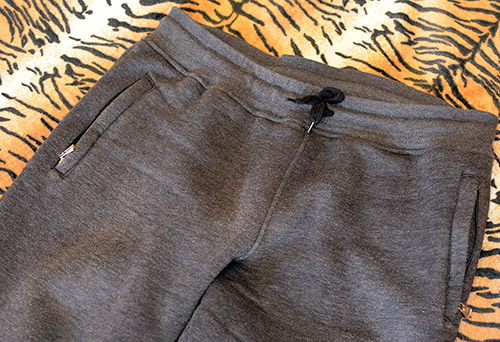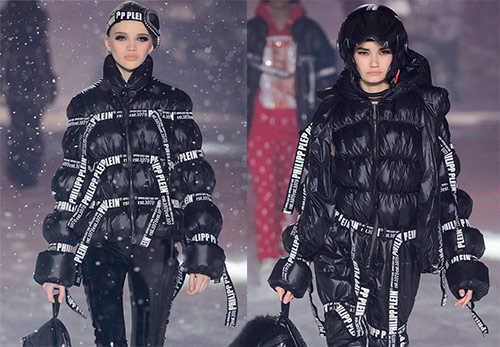Materials Science
Fleece - the history and properties of the fabric
When did fleece appear? This happened in 1979 as a result of research carried out by the laboratory of the American company Malden Mills. The developers of the new material received the Nobel Prize in Chemistry and named the new invention Polarfleece.
The material was created as a substitute for wool, which would allow the body to "breathe" better.
Today, fleece is very popular, the material is especially widely used in the production of clothing, as well as home textiles.
The raw material for the production of fleece is synthetic fiber, which can be either primary or secondary (recycled plastic bottles, film). Fleece has no natural analogue.

Fleece fabric properties
Fleece is a synthetic material that is soft, fuzzy and fluffy. It includes polyester and other artificial fibers. The material is lightweight, moisture-repellent and unpretentious. Fleece keeps warm well, one might say, like real wool. And its name - "fleece" comes from the English word - fleece, so originally sheared sheep or goat wool was called.
The structure of the fabric is such that the body in fleece clothing "breathes" well. The hygroscopicity and breathability of the material creates a cozy atmosphere for the body, therefore it is indispensable in sewing clothing for outdoor activities. The material maintains well the temperature at which it is neither hot nor cold. It is able to keep warm even if you find yourself in the rain.
If sportswear has become your fleece product, then by its properties the fabric is such that it does not absorb sweat moisture, therefore, in order not to be wet, you should first put on thermal underwear, and then fleece. In strong winds, it is best to wear a windbreaker over the fleece.

As mentioned, the fabric is very light, that is, taking a fleece jacket with you on the road will not cause big problems. In addition, the elasticity of the fleece allows you to move freely, without the effect of "puffed knees" or "sagging elbows", the original shape remains.
Fleece fabric is easy to wash and dries quickly, which is so important on long hikes.
What other advantages does fleece have?
Those who wear fleece jackets, probably more than once noticed that the fabric also has heat-insulating properties. Even in case of rain, you will not feel the cold. At the heart of a fleece fabric is a canvas made of polyester or other microfiber, fluffy on both sides, therefore, air bubbles inside such a "fur edge" are a heat insulator.
Fleece is durable and wear-resistant, which means that the service life of products made from this fabric is quite long.
And lastly, the fabric is hypoallergenic, so clothes are made from it not only for adults, but also for children.
The disadvantages include, among the first, electrification and rapid combustion.
As you can see, fleece, which replaced woolen products, has its own special and unique properties that are not identical to wool.

Varieties of fleece
Fleece fabrics differ in texture and thickness, which makes it possible to make various garments and home textiles. The manufacturing technology of the material has been improved many times and now you can find fleece with an anti-pilling coating, which increases its wear resistance. Initially, fleece was a fairly flammable material, but special processing made it possible to eliminate this disadvantage as well.
First of all, fleece fabrics differ in density - from 100 to 600 g / m2, and in appearance. Fleece less than 100g / m2? are called microfleece, the material is thin enough. It is used for delicate linen.
Polarflees - slightly denser than 100 g / m2, used for thermal underwear, leggings and thin sweatshirts.
Medium density - the most common type with a density of 200 g / m2, used for children's clothing, hats, scarves, socks, mittens.
Dense - 300 g / m2 thick, used for winter clothing, as well as home textiles.
Ultra-heavy Polar Fleece with a density of 400-600 g / m2, used for tourist clothing and equipment.

Differences in fabrics by processing method
Many types of fleece differ in the processing method, as a result of which certain properties of the material are improved: anti-pilling, water-repellent, anti-flammable, antistatic. In order for the material to retain its fluffiness and thermal insulation properties, some manufacturers carry out special processing of the material, then the fleece does not wrinkle over time, and remains fluffy for a long time, without forming "pellets".
In appearance
Regular fleece has the same surface on both sides, there are other types where one side is fluffier or denser. The material may also differ in pile height.
By composition
Fleece combined with Lycra - Polar fleece is more wear-resistant;
with spandex - more elastic (gloves, leggings, etc.);
bipolar fleece - the upper layer is wind and waterproof, the lower one is warming;
windblock is a high-tech type with increased windproof properties, a membrane layer is located between two layers of polar fleece.

All possible varieties are obtained by special technological and chemical treatments. But since the raw materials from which the fleece is made are inexpensive, the prices for products made from it are quite affordable.
All fleece products are treated with special solutions to give the material special properties, including antibacterial ones, therefore fleece is an unfavorable environment for the reproduction of dust mites, mold, fungi and other microorganisms, and moths will not start in it.
Application of fleece fabric
For all its merits, fleece is especially popular in sportswear (jackets, suits). But fleece is also used to make casual clothes: hats, sweatshirts, pants, mittens, socks, thermal underwear, robes, jackets, vests and even shirts. From home textiles, blankets, various bedspreads, blankets are made from it.

Fleece care
Although the fleece is durable and unpretentious, there are also rules of care for it.
Products should be washed by hand or in a machine in a delicate mode, while the temperature should not exceed 40 ° C. Like most synthetic things, fleece does not like heat, and at 60 ° C it can lose its shape irrevocably. After washing, the clothes are slightly wrung out, you do not need to twist. Liquid detergents are better (for delicate wash), which do not contain bleach.
You can dry the products under natural conditions, you can simply hang them so that the glass is water, and then carefully spread them on the surface, things will dry quickly enough and retain their original appearance. Fleece products should not be dried in a spinning machine, nor should it be done in a tumble dryer, and even more so on heating radiators, heaters and over a fire.
In no case should you iron fleece products, the temperature of +60 ° C will simply melt them.
Fleece has conquered the clothing market, especially for outdoor activities and sports, and has become an integral part of our wardrobe.
Now you can see that the fleece fabric is very useful, because no natural fiber has such a combination of useful qualities as fleece.

Tell friends:
Comments and Reviews
Add a comment
Rating news
Shades of clothing that make women look younger
What shades of hair make women younger: rules and photos
Funny wedding dresses - photos and ideas
12 most expensive down jackets for the winter
How to look 25 at 40: tips from supermodels
Beautiful schoolgirls
Anti-aging haircuts and hairstyles for women
Fashionable skirts for autumn and winter
Fashionable women's trousers for the cold season
Fashionable and stylish sandals for summer 2020
Spring-summer 2021
 Fashionable dresses and tops with thin spaghetti straps
Fashionable dresses and tops with thin spaghetti straps
 Bandana tops: how to wear stylishly and beautifully
Bandana tops: how to wear stylishly and beautifully
 How to put together the perfect men's wardrobe for the summer
How to put together the perfect men's wardrobe for the summer
 Fashionable shorts for spring-summer 2021
Fashionable shorts for spring-summer 2021
 Fashionable skirts for spring-summer 2021: a guide to online shopping
Fashionable skirts for spring-summer 2021: a guide to online shopping
 The most fashionable dresses spring-summer 2021: styles and colors
The most fashionable dresses spring-summer 2021: styles and colors
 Fashionable total look 2021: ideas of images and trends
Fashionable total look 2021: ideas of images and trends





